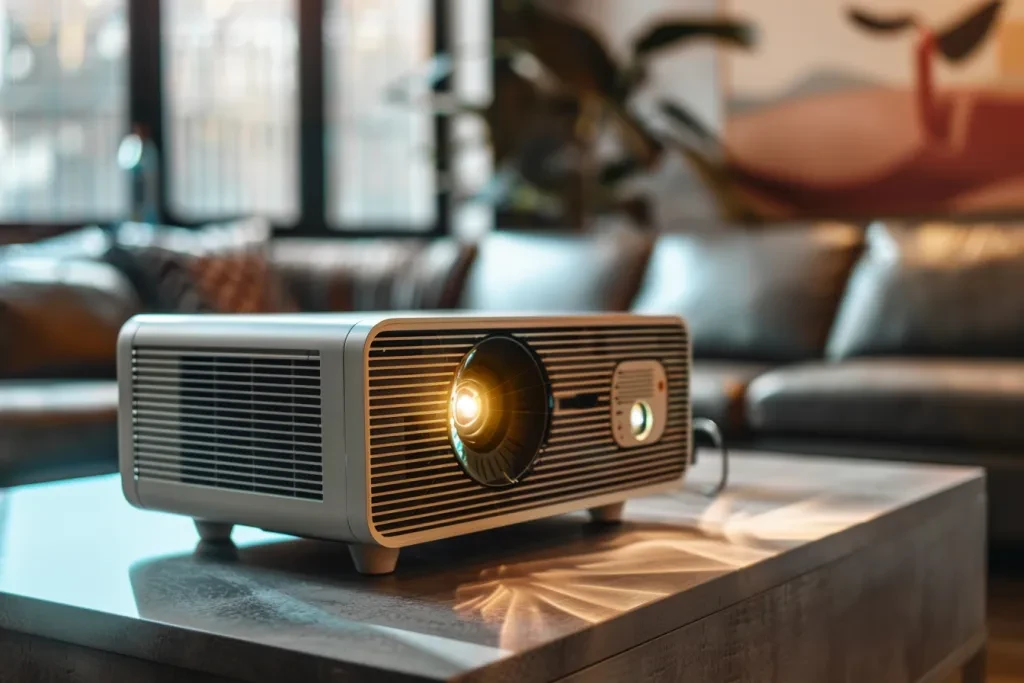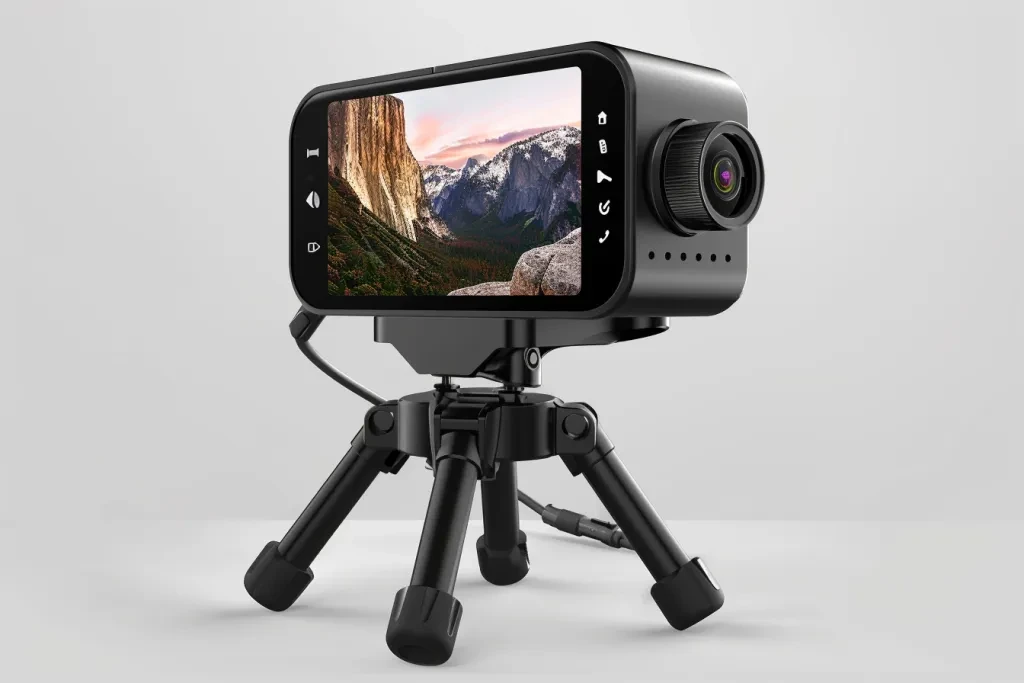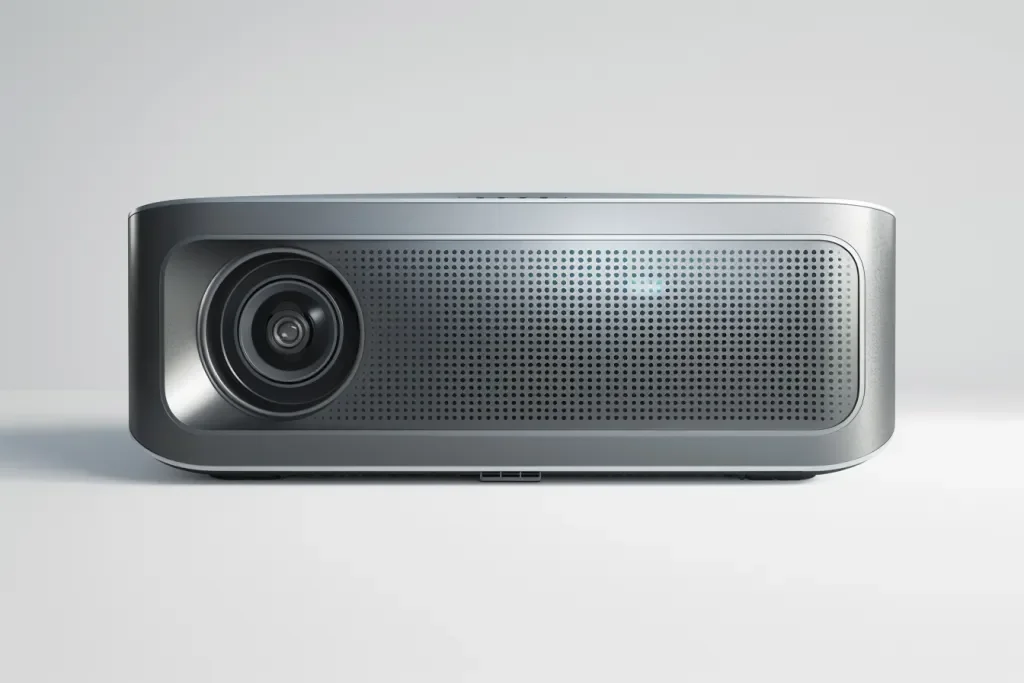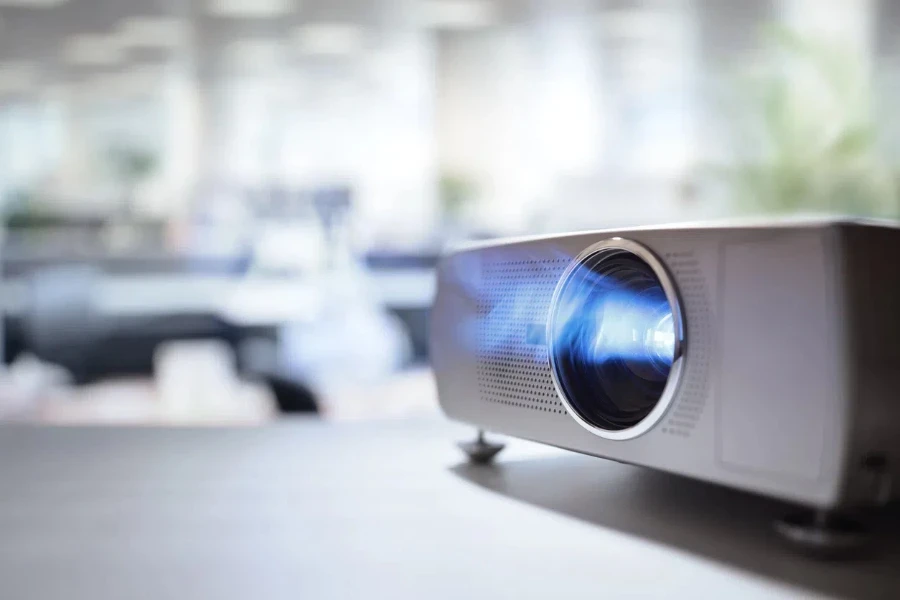In 2025, the smart projector market is set to reach new heights with advanced technologies and growing consumer demand. This article provides an in-depth analysis of key performance benchmarks, market dynamics, and innovative features, offering valuable insights for professional buyers looking to make informed purchasing decisions. Explore the latest trends and ensure a competitive edge in the smart projector market.
Table of Contents:
– Market Overview: Smart Projectors for Enhanced Viewing
– Detailed Market Analysis and Insights
– Key Factors When Selecting a Smart Projector for Enhanced Viewing
– Advanced Technologies in Smart Projectors
– Enhancing the Viewing Experience with Accessories
– Future Trends in Smart Projectors
– Wrapping Up
Market Overview: Smart Projectors for Enhanced Viewing

The global market for smart projectors is experiencing significant growth, with a compound annual growth rate (CAGR) of 10.77%, expected to reach USD 3.9 billion by 2029. This growth is driven by the integration of advanced projection technologies with mobile devices and the rising demand for home entertainment solutions. The market was valued at USD 2.1 billion in 2023, indicating a robust expansion. The proliferation of high-quality streaming services and the growing trend of home theater setups are key factors propelling this market.
The Asia-Pacific region is a major contributor, with countries like China, India, and Japan leading the way. The region’s focus on digitalization in education and the burgeoning entertainment industry drive demand. North America also plays a crucial role, emphasizing technological innovation and high adoption rates of smart home ecosystems. The increasing prevalence of e-commerce platforms has further facilitated market expansion, allowing consumers to explore and purchase smart projectors easily.
Technological advancements, such as the development of 4K and 8K resolution projectors and laser light sources, are revolutionizing the viewing experience. These innovations offer sharper images, brighter colors, and longer lifespans, enhancing the appeal of smart projectors. Additionally, the integration of voice control capabilities and seamless connectivity options with smart home ecosystems is making these devices more user-friendly and versatile.
Detailed Market Analysis and Insights

Smart projectors provide an enhanced viewing experience by integrating the latest display technologies with smart functionalities. These devices are increasingly popular for home entertainment, business presentations, and educational applications. The market is characterized by several key performance benchmarks, including resolution, brightness, connectivity options, and ease of use.
Key Performance Benchmarks
Smart projectors are evaluated based on resolution, brightness, and connectivity features. The latest models support 4K and even 8K resolutions, providing ultra-high-definition visuals ideal for home theaters and professional presentations. Brightness levels, measured in lumens, are another critical factor, with advanced projectors offering up to 10,000 lumens for clear and vivid images even in well-lit environments.
Connectivity options have also evolved, with many smart projectors featuring wireless connectivity, Bluetooth, and integration with smart home ecosystems. These features allow users to stream content directly from their mobile devices, control the projector using voice commands, and integrate it with other smart home devices for a seamless viewing experience.
Market Share Dynamics
The smart projector market is highly competitive, with several key players vying for market share. Companies like Epson, BenQ, and ViewSonic lead the market with innovative products and strategic partnerships. For instance, ViewSonic’s recent launch of the PX749-4K projector in India, featuring a high refresh rate and low input latency, has made it a preferred choice for home entertainment and gaming enthusiasts.
China, with its vast consumer base and strong manufacturing capabilities, is a significant player in the global market. The country is not only a major consumer but also a leading exporter of smart projectors, contributing to market growth. The United States and Europe are also key markets, driven by high consumer demand for advanced home entertainment solutions and significant investments in digital infrastructure.
Economic Influences
The economic landscape plays a crucial role in shaping the smart projector market. Increasing disposable income and changing lifestyles drive demand for high-quality home entertainment devices. The COVID-19 pandemic further accelerated this trend, as lockdowns and social distancing measures led to a surge in home entertainment consumption.
However, the market also faces challenges such as high initial costs and competition from large-size TVs. Manufacturers are addressing these challenges by offering products at different price points and focusing on innovations that enhance the user experience. Supportive government policies in digital infrastructure and the growing trend of smart homes are also providing a favorable environment for market growth.
Recent Innovations
Recent innovations in the smart projector market include the development of portable and compact models that offer high performance without compromising portability. These projectors feature built-in batteries, wireless connectivity, and advanced image processing algorithms, making them ideal for various uses, from outdoor movie nights to business presentations.
The integration of augmented reality (AR) capabilities is another emerging trend, allowing users to interact with digital content in real-time and creating immersive viewing experiences. For example, AR-enabled projectors can enhance business presentations by overlaying digital information onto the real world, making information more accessible and engaging.
Product Lifecycle Stages
Smart projectors are in the growth stage of their product lifecycle, characterized by rapid technological advancements and increasing consumer adoption. The market is expected to continue expanding as new features and functionalities are introduced, and as consumers become more aware of the benefits of smart projectors over traditional TVs.
Digitalization and Social Trends
The digitalization of content and the increasing popularity of streaming services are key drivers of the smart projector market. Consumers seek devices that offer a cinema-like experience at home, and smart projectors, with their large-screen capabilities and high-definition visuals, are well-positioned to meet this demand. Social trends such as the rise of gaming and the growing preference for flexible and portable entertainment solutions are also contributing to market growth.
Environmental Regulations
Environmental regulations are influencing the smart projector market, with a growing emphasis on energy efficiency and sustainability. Manufacturers are focusing on developing projectors with laser and LED light sources that consume less energy and have a longer lifespan compared to traditional lamp-based projectors. These advancements reduce the environmental impact and lower the total cost of ownership for consumers.
Customer Pain Points
Despite the numerous advantages of smart projectors, customers face several pain points, including high initial costs, the complexity of setup, and compatibility issues with existing home theater systems. Addressing these challenges requires manufacturers to invest in user-friendly designs, offer comprehensive customer support, and ensure seamless integration with other devices.
Brand Positioning and Differentiation Strategies
Brand positioning and differentiation strategies are crucial for success in the competitive smart projector market. Companies are focusing on offering unique features, such as voice control, AR capabilities, and advanced connectivity options, to differentiate their products from competitors. Strategic partnerships with content creators and smart home ecosystem providers are also helping brands enhance their market presence and appeal to a broader audience.
Niche Markets
Niche markets, such as gaming and outdoor entertainment, offer significant growth opportunities for smart projector manufacturers. Gaming projectors, with their high refresh rates and low input latency, cater to the growing community of gaming enthusiasts. Portable projectors, designed for outdoor use, are gaining popularity among consumers seeking flexible and convenient entertainment solutions.
By addressing these aspects and leveraging the latest technological advancements, smart projector manufacturers can continue to drive market growth and offer enhanced viewing experiences to consumers worldwide.
Key Factors When Selecting a Smart Projector for Enhanced Viewing

When choosing a smart projector for an enhanced viewing experience, several key factors must be considered. These include resolution, brightness, connectivity options, audio capabilities, and user interface. Each aspect plays a critical role in determining the overall performance and user satisfaction with the projector. Below are detailed discussions on each of these factors.
Resolution
Resolution is crucial when selecting a smart projector, as it determines the clarity and detail of the projected image. Common resolutions include 720p (HD), 1080p (Full HD), and 4K (Ultra HD).
Higher resolutions provide more detail and are particularly beneficial for larger screens. For instance, 4K projectors offer four times the resolution of 1080p, making them ideal for home theaters. However, 1080p projectors are still popular and provide a good balance between cost and image quality.
Consider the content you will be viewing and the projector’s intended use. For example, 4K projectors are excellent for movies and gaming, while 1080p projectors might suffice for business presentations and casual viewing.
Brightness
Brightness, measured in lumens, is another critical factor that affects a smart projector’s performance. The brightness level determines how well the projector will perform in various lighting conditions.
For home theater setups in dark rooms, a projector with 1500 to 2500 lumens may be sufficient. However, for rooms with ambient light or outdoor use, a projector with at least 3000 lumens is recommended to ensure clear and vibrant images.
Consider the type of content being projected. Brightness is crucial for presentations and educational content where clarity is paramount, whereas for movie watching in a controlled environment, slightly lower brightness might be acceptable.
Connectivity Options
Modern smart projectors come with various connectivity options to enhance their versatility and ease of use. These include HDMI ports, USB ports, wireless connectivity (such as Wi-Fi and Bluetooth), and screen mirroring capabilities.
HDMI ports are essential for connecting devices like Blu-ray players, gaming consoles, and streaming devices. USB ports allow for direct playback of media files from USB drives. Wireless connectivity enables the projector to stream content from smartphones, tablets, and computers without cables.
Screen mirroring capabilities, such as Miracast or AirPlay, allow users to project their device screens directly onto the projector, making it easy to share content during meetings or social gatherings. Ensure the projector has the necessary connectivity options to match your usage requirements.
Audio Capabilities
While the primary function of a projector is to display visuals, audio capabilities should not be overlooked. Many smart projectors come with built-in speakers, but the quality and power of these speakers can vary significantly.
For an immersive viewing experience, consider a projector with high-quality built-in speakers or one that allows easy connection to external audio systems. Some projectors feature Dolby Audio or DTS sound technology, providing a richer and more dynamic audio experience.
Additionally, check for audio output options such as 3.5mm audio jacks, optical outputs, or Bluetooth connectivity, which allow you to connect the projector to external sound systems for enhanced audio performance.
User Interface and Smart Features
The user interface and smart features of a projector can greatly impact the overall user experience. A projector with an intuitive and user-friendly interface makes it easier to navigate settings and access content.
Smart features such as built-in streaming apps (Netflix, YouTube, Amazon Prime), voice control (Google Assistant, Alexa), and app store access can enhance the functionality of the projector. These features allow users to stream content directly from the projector without needing additional devices.
Moreover, some projectors come with advanced features like auto keystone correction, which automatically adjusts the image to ensure it is perfectly aligned on the screen, and focus adjustment, which ensures a sharp and clear image. These features contribute to a hassle-free setup and operation, making the viewing experience more enjoyable.
Advanced Technologies in Smart Projectors

As technology advances, smart projectors are becoming more sophisticated, incorporating features and functionalities that enhance the viewing experience. Understanding these technologies can help buyers make informed decisions.
Laser Projection Technology
Laser projection technology is one of the latest advancements in the projector industry. Unlike traditional lamp-based projectors, laser projectors use laser diodes to produce light, offering several advantages.
Laser projectors provide higher brightness levels, often exceeding 5000 lumens, making them suitable for various lighting conditions. They also offer superior color accuracy and a wider color gamut, resulting in more vibrant and realistic images.
Another significant advantage of laser projectors is their longevity. Laser light sources can last up to 20,000 hours or more, reducing the need for frequent maintenance and bulb replacements. This makes laser projectors a cost-effective choice in the long run.
4K UHD and HDR Support
4K UHD (Ultra High Definition) projectors deliver four times the resolution of Full HD projectors, resulting in incredibly detailed and sharp images. This is particularly beneficial for large screen sizes, where the increased resolution is more noticeable.
HDR (High Dynamic Range) support further enhances the viewing experience by providing a broader range of colors and improved contrast. HDR projectors can display more details in both the darkest and brightest parts of an image, creating a more immersive and lifelike visual experience.
When combined, 4K UHD and HDR technologies offer a viewing experience that rivals that of premium TVs, making smart projectors an attractive option for home theaters and high-end entertainment setups.
Smart Connectivity and Integration
Smart projectors are designed to seamlessly integrate with other smart devices and systems, enhancing their functionality and ease of use. Features like Wi-Fi, Bluetooth, and Ethernet connectivity allow projectors to connect to home networks and stream content directly from the internet.
Integration with smart home systems like Google Home or Amazon Alexa enables voice control, allowing users to operate the projector hands-free. This is particularly useful for adjusting settings, controlling playback, and accessing content without using a remote.
Additionally, some projectors offer compatibility with smart home automation systems, enabling users to create customized scenes and routines. For example, a “movie night” scene could dim the lights, lower the projector screen, and start playing a movie with a single voice command or button press.
Portable and Compact Designs
The demand for portable and compact projectors has been on the rise, driven by the need for flexible and versatile viewing solutions. Modern smart projectors are designed to be lightweight and portable, making them easy to carry and set up in different locations.
Portable projectors often come with built-in batteries, providing several hours of playback without the need for a power source. This makes them ideal for outdoor movie nights, business presentations on the go, and travel.
Despite their small size, portable projectors can offer impressive performance, with some models providing Full HD resolution, high brightness levels, and robust connectivity options. This combination of portability and performance makes them a popular choice for a wide range of applications.
Enhancing the Viewing Experience with Accessories

To fully maximize the potential of a smart projector, consider investing in accessories that enhance the viewing experience. These can improve image quality, sound, and overall usability.
Projection Screens
A high-quality projection screen is essential for achieving the best possible image quality. While projecting onto a wall is possible, a dedicated screen provides a smoother and more reflective surface, resulting in sharper and more vibrant images.
Projection screens come in various types, including fixed-frame, pull-down, and motorized screens. Fixed-frame screens are ideal for permanent installations, offering a flat and tensioned surface. Pull-down and motorized screens provide flexibility, allowing the screen to be retracted when not in use.
Consider the screen material as well. Matte white screens are versatile and work well in most environments, while high-gain screens enhance brightness but may have narrower viewing angles. Ambient light rejecting (ALR) screens are designed to perform well in rooms with ambient light, providing better contrast and color accuracy.
External Audio Systems
While many smart projectors come with built-in speakers, an external audio system can significantly enhance the sound quality and overall viewing experience. Consider investing in a soundbar, home theater system, or portable Bluetooth speakers.
Soundbars are a popular choice for their compact design and ease of installation. They provide a significant upgrade over built-in speakers and often include features like virtual surround sound and subwoofers for deeper bass.
For a more immersive audio experience, a home theater system with multiple speakers and a subwoofer can create a true surround sound environment. These systems provide superior audio quality and are ideal for dedicated home theater setups.
Mounting Solutions
Properly mounting a projector ensures optimal image alignment and stability. Ceiling mounts are a popular choice for permanent installations, keeping the projector out of the way and providing a clean setup.
When selecting a mount, ensure it is compatible with the projector’s size and weight. Adjustable mounts offer flexibility in positioning, allowing for precise image alignment. Some mounts also include cable management features to keep cables organized and out of sight.
For portable projectors, consider using a tripod or tabletop stand. These solutions provide stability and allow for easy adjustments to the projector’s height and angle, ensuring the best possible image quality.
Future Trends in Smart Projectors

As technology continues to evolve, smart projectors are expected to incorporate even more advanced features and capabilities. Keeping an eye on these trends can help buyers make informed decisions and invest in future-proof devices.
AI and Machine Learning
Artificial intelligence (AI) and machine learning are set to revolutionize the smart projector industry. AI-powered projectors can automatically optimize image settings based on the content being displayed, providing the best possible viewing experience without manual adjustments.
Machine learning algorithms can also enhance features like auto keystone correction and focus adjustment, making setup and operation more intuitive. Additionally, AI can improve voice recognition capabilities, enabling more accurate and responsive voice control.
Augmented Reality (AR) and Mixed Reality (MR)
Augmented reality (AR) and mixed reality (MR) are emerging trends that have the potential to transform the way we interact with projected content. Smart projectors with AR and MR capabilities can overlay digital information onto the real world, creating immersive and interactive experiences.
For example, AR projectors can be used in educational settings to display interactive models and simulations, enhancing the learning experience. In entertainment, MR projectors can create immersive gaming environments, blending digital and physical elements seamlessly.
Sustainable and Eco-Friendly Designs
With increasing awareness of environmental issues, sustainability is becoming a key consideration in the design and manufacturing of smart projectors. Future projectors are expected to incorporate eco-friendly materials, energy-efficient components, and sustainable production practices.
Laser projectors, for example, are more energy-efficient and have longer lifespans compared to traditional lamp-based projectors, reducing waste and energy consumption. Manufacturers may also focus on creating modular designs that allow for easy repairs and upgrades, extending the lifespan of the devices.
Wrapping Up
In conclusion, selecting the right smart projector involves careful consideration of various factors, including resolution, brightness, connectivity options, audio capabilities, and user interface. Advanced technologies such as laser projection, 4K UHD, and HDR support, along with smart connectivity and portable designs, further enhance the viewing experience. Investing in accessories like projection screens, external audio systems, and mounting solutions can maximize the potential of a smart projector. As the industry continues to evolve, keeping an eye on future trends like AI, AR, and sustainable designs will ensure that buyers make informed and future-proof decisions.



